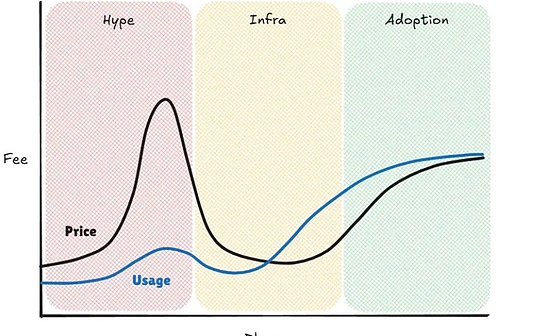
Author: Matt Crosby, Chief Analyst of Bitcoin Magazine Pro; Compiler: Shaw Bitcoin Vision
Is Bitcoin finally breaking free of its four-year cycle pattern, or is this bull market coming to an end??through researchHistorical growth rates, liquidity data and macroeconomic correlations, we can better understand whether the current cycle is indeed diverging and what that means for investors in the coming months.
cycle duration
Analyzing Bitcoin’s gains since the cycle low, we can see that,Bitcoin has now surpassed the duration from cycle lows to cycle highs seen in previous bull markets.The 2018-2022 cycle peaked 1,059 days after its previous bear market low, and the current cycle has now exceeded that length.If we calculate the average length of the past two complete market cycles, Bitcoin has surpassed the historical average and is on the verge of surpassing the 2017 cycle length in the coming days.
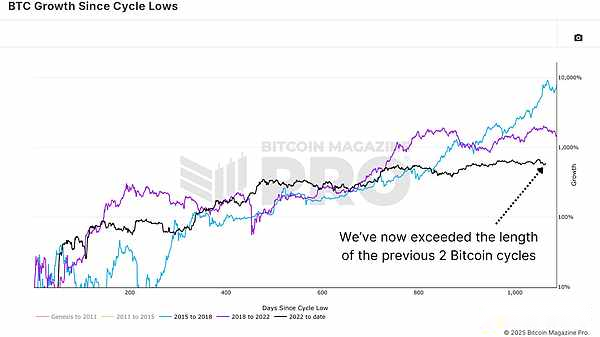
Figure 1: BTC growth since the cycle low suggests that the current cycle is longer than the previous two 4-year cycles.
Diminishing impact
Historically,The root of Bitcoin’s four-year cycle lies in its halving event, in which block rewards and inflation rates will be halved..Each halving triggers a dramatic supply shock, driving a sharp rise in the bull market.However, this cycle is playing out differently.Following the latest halving, Bitcoin experienced five months of sideways trading, rather than the strong gains seen after previous halvings.Although the price has increased since then, the momentum has been weaker, leading many to question whether the halving has lost its influence.
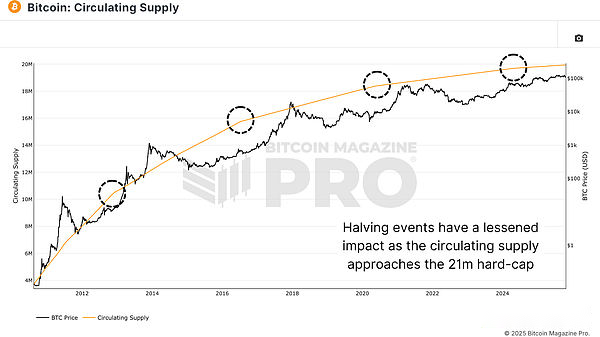
Figure 2: Bitcoin’s circulating supply and diminishing impact of marginal inflation.
With the current circulating supply exceeding 95% of Bitcoin’s final total supply (21 million), marginal supply reductions may no longer be as significant.at present,Miners issue approximately 450 newly mined Bitcoins every day, an amount that can easily be absorbed by a handful of institutional buyers or exchange-traded funds (ETFs).This means that the halving itself may no longer be the main driver of the Bitcoin market cycle.
liquidity cycle
When we look at global broad money supply (M2) versus Bitcoin year-over-year, we can see a clear pattern.Every major Bitcoin bottom has coincided almost perfectly with a trough in global M2 liquidity growth.
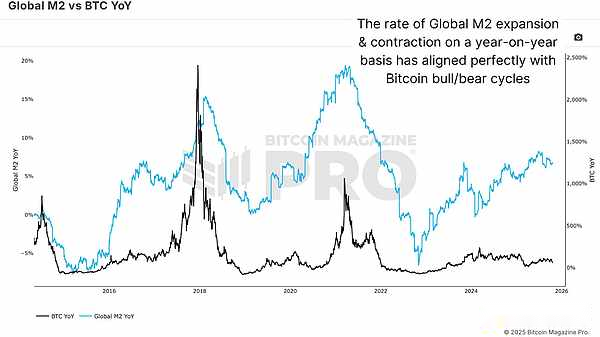
Figure 3: Global M2 and BTC (year-over-year) have historically been almost identical.
If we juxtapose the Bitcoin halving event with the M2 trough, we see that halvings typically lag liquidity cycles, suggestingLiquidity expansion, not halving event, is Bitcoin’s real catalyst.This is not unique to Bitcoin.Gold has behaved the same way for decades, with its price performance closely tied to how quickly global M2 expands or contracts.
negative correlation
The key to this liquidity story lies in the U.S. Dollar Index (DXY).Historically, Bitcoin’s year-over-year trend with DXY has been almost entirely inversely correlated.When the U.S. dollar strengthens year over year, Bitcoin tends to enter a bear market.When the U.S. dollar weakens, Bitcoin will start a new bull market.This inverse relationship also applies to gold and the stock market, which highlights the broader theory of currency devaluation cycles, namelyAs the purchasing power of fiat currencies declines, hard assets quickly appreciate in value.
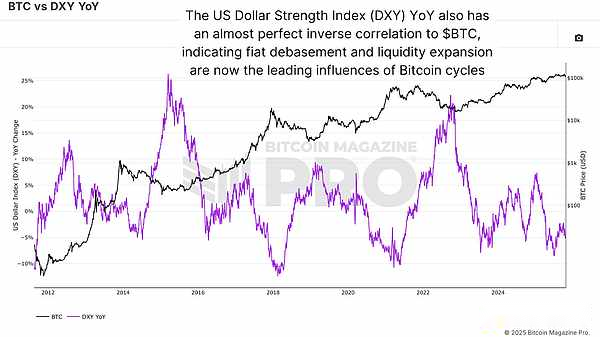
Figure 4: BTC’s strong negative correlation with DXY (year-over-year) and with major market turns.
Currently, the U.S. Dollar Index is in a short-term uptrend, consistent with Bitcoin’s recent consolidation trend.However, the index is now approaching a key historical resistance area that has previously marked a major turning point and signaled a longer-term decline for the U.S. Dollar Index.If this pattern continues, the next big move lower in the US dollar could trigger a new upcycle for Bitcoin.
quantitative tightening
Recent comments from Federal Reserve Chairman Jerome Powell suggest that the era of balance sheet reduction (quantitative tightening) may be coming to an end.From a comparison of the Fed’s balance sheet and Bitcoin, historically,Balance sheet expansion and the start of a new round of quantitative easing tend to coincide with sharp gains in Bitcoin and the stock market.
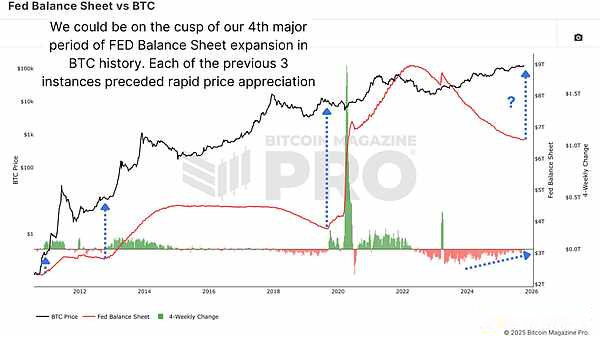
Figure 5: Fed balance sheet inflection points have historically coincided with Bitcoin bull cycle expansions.
In the two years after the Fed’s previous balance sheet expansions, the S&P 500 returned an average of 47%, more than five times the average two-year return during the neutral period.If the Fed does enter a new phase of easing, this could not only prolong Bitcoin’s current cycle but also set the stage for a liquidity-driven rally in risk assets.
in conclusion
Bitcoin has now surpassed the time span of its first two cycles, leading many to question whether the four-year cycle rule still applies.But when we take a step back and look, we find a different story.Not driven by default scarcity, but by global liquidity, fiat currency devaluation, and macro capital flows.The four-year cycle may not be broken, but it may just evolve.
If the dollar weakens, the Fed pauses tightening, and global M2 growth accelerates, then Bitcoin may still have room to rise..For now, as always, the best strategy remains: respond proactively, not predict.Stay data-driven, stay patient, and keep an eye on liquidity.

